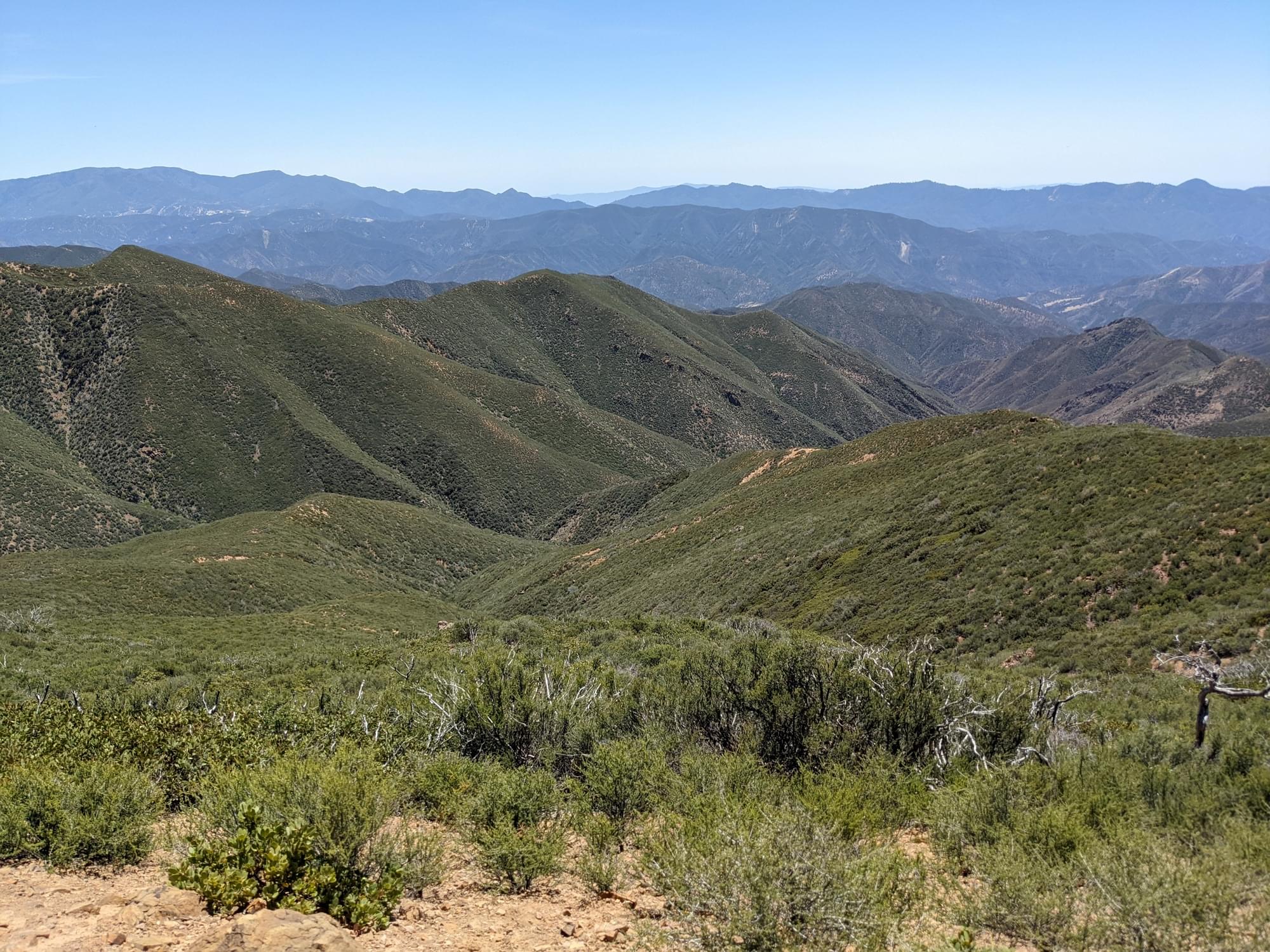Bates Canyon Rd south of campground

Tips for Birding
You can bird this hotspot either on foot or by car. The distance from the campground, where this hotspot begins, to the top of the canyon where Bates Canyon Road meets Sierra Madre Road, is about 6 miles. It takes at least 3-4 hours to get to the top on foot if you bird along the way. The road is narrow but there are enough pullouts to make it feasible to bird by car. However, the road is seldom re-graded and is most often in poor condition. Best to not expect passage to Sierra Madre Road without a high-clearance vehicle. The road can become impassable after rains.
Birds of Interest
Several species of owl, including Northern Pygmy, Western Screech, Great Horned, and Northern Saw-whet. There are also a couple of records of Long-eared Owl. A Great Horned Owl moved into the area sometime in 2021-2022 and observations of other species seem to have dropped off after that.
Poorwills are relatively numerous.
The lower reaches of the canyon - which feature riparian and woodland habitat - are a breeding ground for many woodland birds, including Western Wood-Pewee, Ash-throated Flycatcher, Cassin's Vireo, Warbling Vireo, Lawrence's Goldfinch, Black-throated Gray Warbler, Western Tanager, Black-headed Grosbeak, Lazuli Bunting, and Costa's Hummingbird. On a spring day, the bird song chorus can be very impressive. Violet-green Swallows are usually numerous in spring and summer. Mountain Quail are abundant.
Migrant passerines pass through here in spring, including species like Hammond's Flycatcher.
Part of the upper section of the canyon features drier oak forest and has Brown Creeper and occasionally Golden-crowned Kinglet.
In the middle and part of the upper reaches of the canyon, the dominant vegetation is chaparral. Here there are Bell's Sparrows and Black-chinned Sparrows.
Golden Eagles sometimes soar above the canyon.
About this Location
This is a beautiful and seldom-visited canyon with undisturbed habitats ranging from riparian and oak woodlands to high-elevation chaparral. Use this hotspot for the entire reach of Bates Canyon Road from above the campground to the top of the canyon where Bates Canyon Road meets Sierra Madre Road. For the campground itself, use the separate hotspot Bates Canyon Campground.
About Cuyama Valley
See all hotspots at Cuyama Valley
Cuyama Valley offers a range of habitats, many of which are not found elsewhere in Santa Barbara County.
The valley itself has grasslands and croplands and can be birded from many roads such as Bell and Foothill Road, Aliso Canyon Road, Wasioja Road, and Cottonwood Canyon. This area has hundreds if not thousands of Horned Larks in winter, and the occasional longspur. Winter brings Ferruginous Hawks and Mountain Bluebirds. In spring, the valley becomes a stopover point for migrating Swainson's Hawks, with as many as 74 seen at one time! Note that most land in the valley is private, so do not venture beyond the roadside.
The canyons east of the valley offer desert habitat and species like Black-throated Sparrow, Bell's Sparrow, Black-chinned Sparrow, and Scott's Oriole. The best hotspot here is Ballinger Canyon. Nighthawks can be heard here in early spring mornings. Santa Barbara Canyon offers some of the same species, especially Bell's Sparrow and Scott's Oriole.
To the south of the valley are the foothills of the Sierra Madre. These can most easily be accessed at Aliso Park and Bates Canyon. Many songbirds breed here, including Cassin's Vireo and Black-throated Gray Warbler. Six owl species have been recorded here, and Common Poorwills are regular, especially in spring. The upper reaches of Bates Canyon have Brown Creeper and sometimes Golden-crowned Kinglets, and in the high-altitude chaparral, Bell's Sparrow and Black-chinned Sparrow.
A few ponds attract shorebirds and ducks, including New Cuyama Water Treatment Plant, Quatal Canyon, and what is referred to as the "nighthawk pond" on State Road 33. These also attract dozens of nighthawks in late summer, at dusk. Caliente Ranch Wetland is a natural depression on farmland, and attracts ducks and sometimes shorebirds when there is water (usually after the winter rains).
Since the valley is mostly tree-less, patches of trees attract passerines year-round, and particularly during migration. Check out Quatal Canyon, Richardson Park, and Santa Barbara Pistachio.
Dry Canyon has one of the few patches of Pinyon Pine in Santa Barbara County. A small patch of pine forest can also be found at Miranda Pine Campground.
The Cuyama Dairy attracts hundreds of blackbirds, often including Tricolored.
Features
Roadside viewing
Restrooms on site
Wheelchair accessible trail
Entrance fee
Content from Linus Blomqvist and Linus Blomqvist